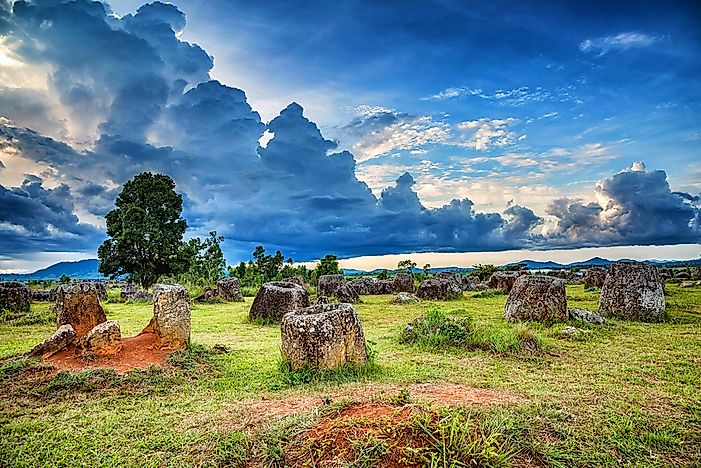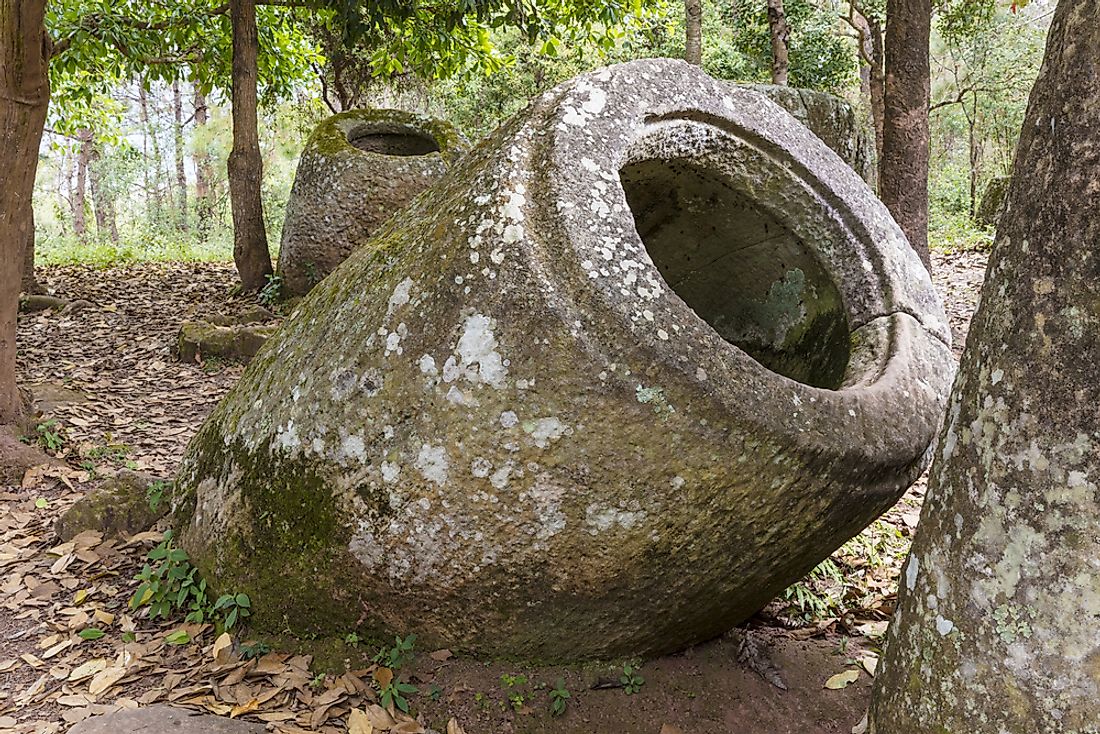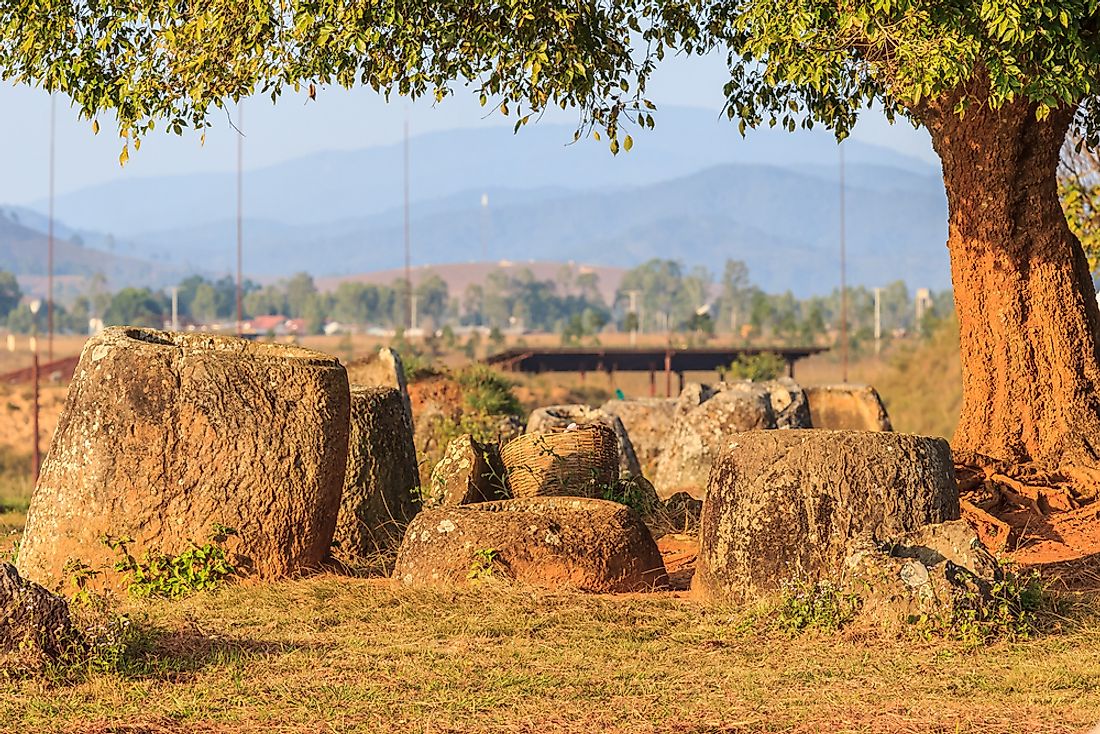Vientiane, Laos – World’s Most Relaxed Capital
Backpackers head south to get drunk and float down the river that skirts the village of Vang Vieng. More sophisticated travellers zero in on Laos’ luxurious capital, Vientiane, usually before a visit to Luang Prabang.
Unusually for a capital, Vientiane lies just over a border – the one with Thailand, just across the Friendship Bridge. The influence that shines through most brightly, however, is French.
For a start, the name is gallicised. The original name, Viangchan, which means ‘City of the Moon’ in the native Lao language, proved too tricky for the French tongue.
Expect French food, French flowers (marigolds), even the Arc de Triomphe – well, a monstrous concrete mockup, known as the Victory Arch. Dubbed the Vertical Runway because it was built with cement donated by the United States in 1969 for airport construction, the arch is a touch taller than the original, to spite the French, but unfinished.
A sign blames this on Laos’ tumultuous history, presumably meaning the punishment inflicted by the French, Japanese, Chinese, Burmese, Vietnamese, Thais and Americans. But all that was a while back. Even the sign itself recognizes the monument’s deficiencies, calling it a ‘monster of concrete’. No spin here. Cynics may wonder why the landlocked Communist state still cannot get its act together and finish the job. The decrepitude which the arch epitomises also extends to the streets, so be careful not to step in a pothole or sewer.
Be careful too of the tuk-tuk drivers, who are as enterprising as any you will meet in Asia. Always fix a price and clarify your destination before you jump in. Otherwise, expect to be taken to the wrong side of town for rather more Kip – the not-quite-worthless currency – than you care to cough up.
The perfect remedy for a white-knuckle tuk-tuk ride is a session at one of Vientiane’s many excellent and ridiculously cheap spas. For a flurry of Kip you can experience a massage far less brutal than the kind meted out by Thai pampering pugilists – and in much more atmospheric surroundings.
Blessed with bags of Indochinese style and with the cheeriest of residents, Vientiane blends Gallic flair with Asian mystique. This style also influences and permeates the sauces and aromas of the exquisite cuisine available in the world-class French restaurants at Fountain Square. For those travellers who are heartily sick of the sweet and sickly white wheat products falsely posturing as ‘bread’ across almost all of SE Asia, the lunch baguettes and breakfast croissants available throughout most of Laos will make a most welcome change.
The culinary alternative to Fountain Square is the Mekong. Its near bank is lined with scores of cheaper but still good Asian restaurants where diners lounge on mats and watch the sun set over the river while sipping a cold Beer Lao, the default and delicious state brew.
If you can tear yourself away from Vientiane’s culinary attractions, then maybe visit the Lao National History Museum. Set on the high street, it sounds and looks boring, but is brought to life by its jargon of jingoistic rage against the invader. Check out the photos of sniper peasants and the displays of chunky guns. ‘Weapons ordered by the US imperialists for its puppets,’ one caption screams.
If your spine can handle the bone-jarring 24 km ride, then take a trip from Vientiane to maybe the area’s most memorable attraction: that memory card-consuming icon, Buddha Park sculpture garden. There, tilted at crazy angles, mammoth concrete statues of Buddhist and Hindu gods jostle with fantastical likenesses of real and imaginary beasts. The highlight must be the three-storey giant pumpkin-like representation of Hell, Earth and Heaven, which is entered through the jaws of a demon head. More kitsch than religious, but a fun day out.
Apparently designed by Salvador Dali while drugged beyond his eyeballs, Buddha Park dates back to 1958 and owes its existence to the mystic seer Luang Pu Bunleua Sulilat, who left Laos after the 1975 communist takeover. The park cuts a contrast with the golden and gorgeous downtown temples that stick to the rulebook more but, like Buddha Park, also have a slightly hallucinatory feel about them.
Whilst these attractions are worth a visit, Vientiane lacks the truly monumental and instead captures the senses by its tranquility and idiosyncratic charm. It’s a place to eat, people-watch, relax, get a massage, maybe visit one of the respectable night-clubs. Vientiane lacks vibrancy but, for so many visitors with enough energy expenditure in their everyday lives, this is just what the doctor ordered.
“Vientiane is exceptional, if inconvenient”, wrote Paul Theroux in 1975, “the brothels are cleaner than the hotels, marijuana is cheaper than pipe tobacco, and opium is easier to find than a cold glass of beer”. A lot has changed since 1975: Vientiane is no longer, after a thorough purge by the communist regime, in any way a seedy or a druggy place. Whether this could have been achieved without sending so many people on decade-long sojourns in re-education camps is not something we can give an opinion on, as we would like to one day get visas to visit the country again.
Source by: simon ramsden


















